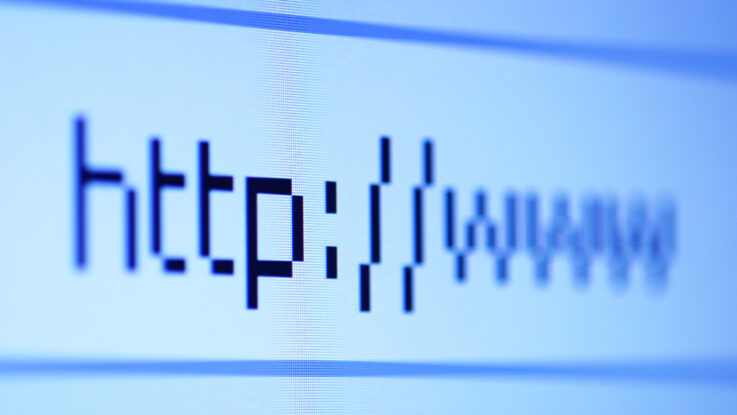
Two new top-level domain names — .zip and .mov — have caused concern among security researchers, who say they allow for the construction of malicious URLs that even tech-savvy users are likely to miss.
Google announced the domains in early May, kicking off a slow buildup of criticism from the security community as people became aware of the issues. In a widely circulated post on Medium, security researcher Bobby Rauch pointed to two seemingly identical URLs that appear to go to the same place — downloading a zip file from a GitHub repository — but by using unicode slashes, an “@” sign, and the .zip domain, a potentially malicious URL could instead redirect users to an attacker’s website.
While a top-level domain (TLD) that mimics a file extension is only one component in the lookalike attack, the overall combination is much more effective with the .zip or .mov extension, says Tim Helming, security evangelist at DomainTools, a provider of domain-related threat intelligence.
“There’s no question that phishing links that involve these TLDs can be used to lure unsuspecting users into accidentally downloading malware,” he says. “Unlike other kinds of phishing URLs that are intended to lure the user to enter credentials into a phony login page, the lures with the .zip or .mov domains are more suited to drive-by download types of attacks.”
In the three weeks since Google announced the new domains — along with .dad, .phd, and .foo — security researchers have pointed out the dangers of TLDs that match file extensions. On Tuesday, for example, Trend Micro became the latest security firm to warn users to fine-tune their ability to spot malicious links. In the advisory, the company pointed out that the Vidar info-stealer uses fake URLs to download a “Zoom.zip” file to the victim’s computer — and that the .zip domain will make the attack much more effective.
Google did not answer questions about the tradeoffs between risk and utility for the new TLDs but did send a statement to Dark Reading, pointing to other confusing domains, such as 3M’s command.com domain as a way of arguing that the issue is not novel.
“The risk of confusion between domain names and file names is not a new one,” the company stated. “Applications have mitigations for this — such as Google Safe Browsing — and these mitigations will hold true for TLDs such as .zip. At the same time, new namespaces provide expanded opportunities for naming such as community.zip and url.zip.”
Whether the new domains will make phishing better is still a question for some, but the risk of making more effective links seems to outweigh any benefit of the domains, says Erich Kron, security awareness advocate at phishing and security education firm KnowBe4.
“It’s the ‘why are we doing this?’ that kind of gets me, and frankly, it’s just a bad idea, right?” he says. “Bad actors have been using .zip files and compressed files to get people to download malware for eons, and then to make a top-level domain that the general public is going to associate with [legitimate files] … we are really opening the doors to some some very easy trickery here.”
No Active Phishing Attacks so Far
The domain names have already led to some mistakes, and not just on the part of humans. Some tools, such as Google’s own malware identification service VirusTotal, are confusing filenames with the .zip extension with URLs with the .zip TLD, according to Johannes Ullrich, dean of research for education organization SANS Technology Institute. Ullrich is in the process of surveying existing .zip domains to see which are malicious.
He has found that evidence of in-the-wild campaigns is scant so far. “This opens up new avenues for more convincing phishing attacks,” Ullrich said, with a caveat: “However, there are already many ways to create convincing phishing attacks, so the risk is more incremental.”
The good news is that attackers have not yet picked up the technique en masse for real-world attacks, Trend Micro stated in its advisory.
“As of today, Trend Micro has not yet received URLs related to these new TLDs from internal and customer cases,” the company stated. “However, we will continue to monitor any related URLs we come across and block them as needed in preparation for potential phishing campaigns.”
At this point, the biggest “attack” so far involves “rickrolling” and parked domains, Ullrich says: At least 48 domains have been registered by people who then posted a video of singer Rick Astley and his song, “Never Gonna Give You Up.”
Awareness, Best Security Practices Remain Top Advice
The creation of file-extension-lookalike domain names will likely lead Google and other browser makers to adopt warnings in their software, alerting users when a domain uses special unicode characters — such as two characters that appear to be slashes (/) — and which could be confused for legitimate URLs.
However, much will still rely on users, who should be careful about checking links, and companies, which can restrict new domain names until cybersecurity providers can assign them a reputation, DomainTools’ Helming says.
“There are ways for very savvy users to spot these file paths visually,” he adds, “but the most effective defenses are going to be a combination of efforts that include security control detections for things like those characters, risk scoring for newly created domains — in any TLD — and updated user awareness training.”
With reporting by Jaikumar Vijayan